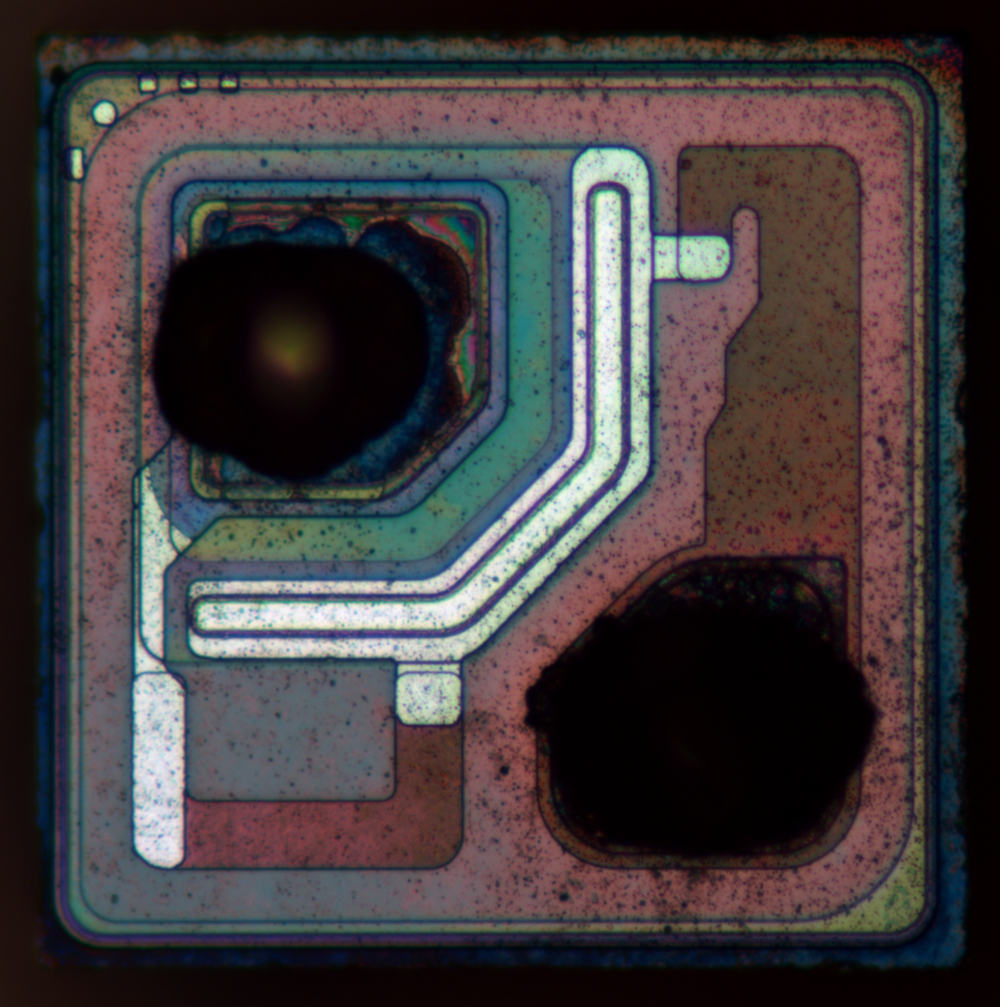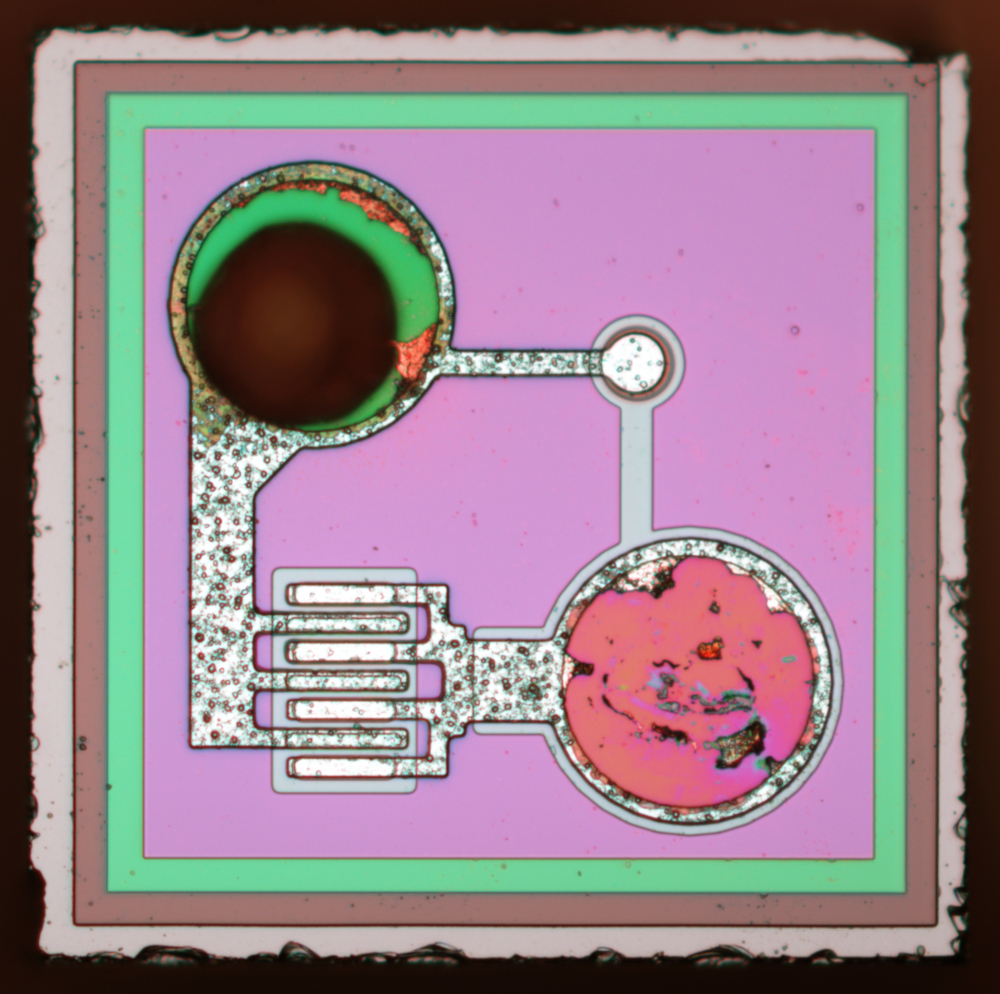March 8, 2019
March 1, 2019
Ti TL051CDRA - trimmed JFET 20V/µs opamp : weekend die-shot
Extremely similar to BB OPA134PA.Die size 1587x1070 µm.
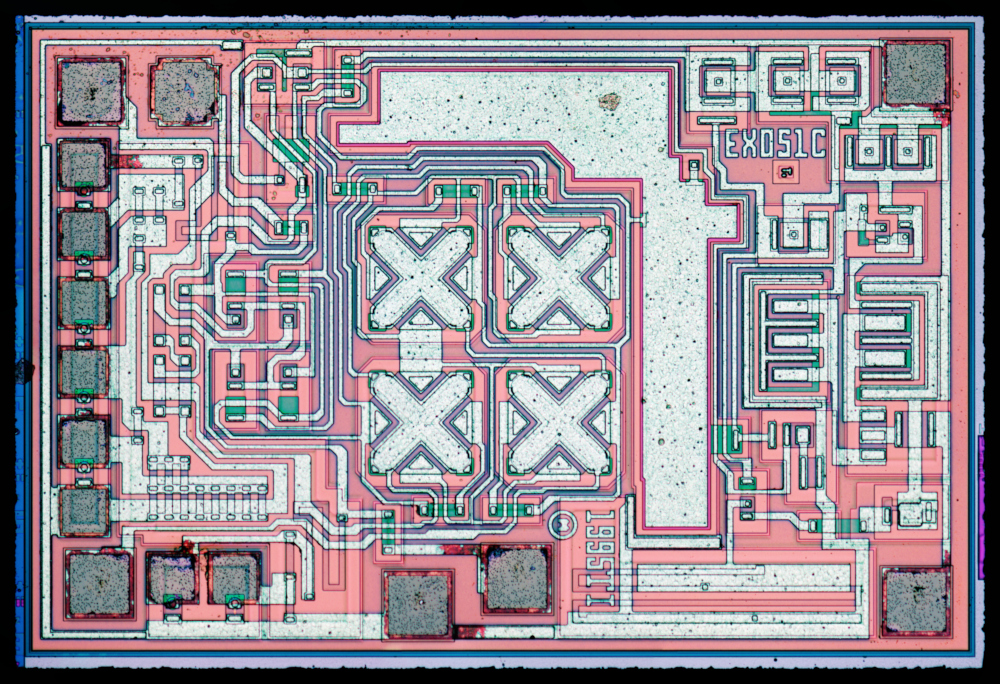
February 23, 2019
February 17, 2019
Fake CD40106B CMOS Hex Schmitt-Triggers Inverters : weekend die-shot
This is Chinese Hex-Schmitt Trigger Inverter chip, marked as if it was made by Texas Instruments, sourced from eBay. Interesting part is that it apparently reuses most masks from CD4049 (hex inverter) we've decapped earlier : transistors needed for Schmitt-input were also present at CD4049, but not connected by different top metal. Somebody did saved few thousands $ here.Die size 714x849 µm.
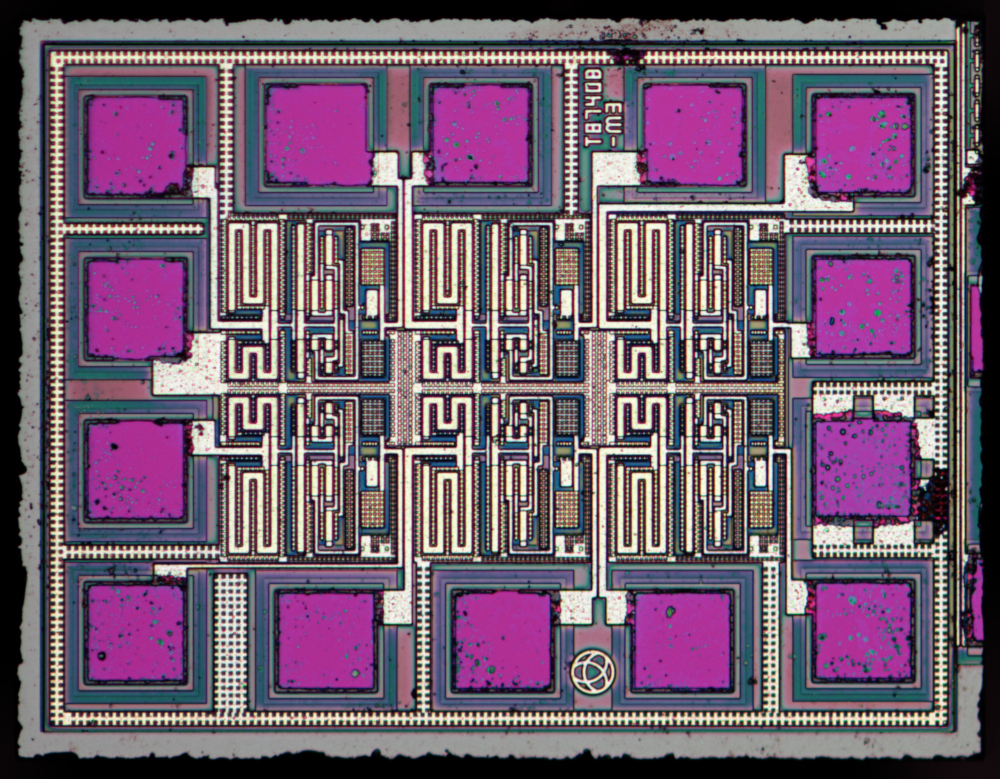
Update: Now with metal stripped. it's a metal-gate CMOS, so no gates survived:
Read more →
February 1, 2019
PIC/Atmel ATtiny4 : weekend die-shot
PIC/Atmel ATTiny4 - one of the smallest AVR microcontrollers, with 4KiB Flash, 256B EEPROM, 256B SRAM and just 6 pins.Die size 1368x926 µm.
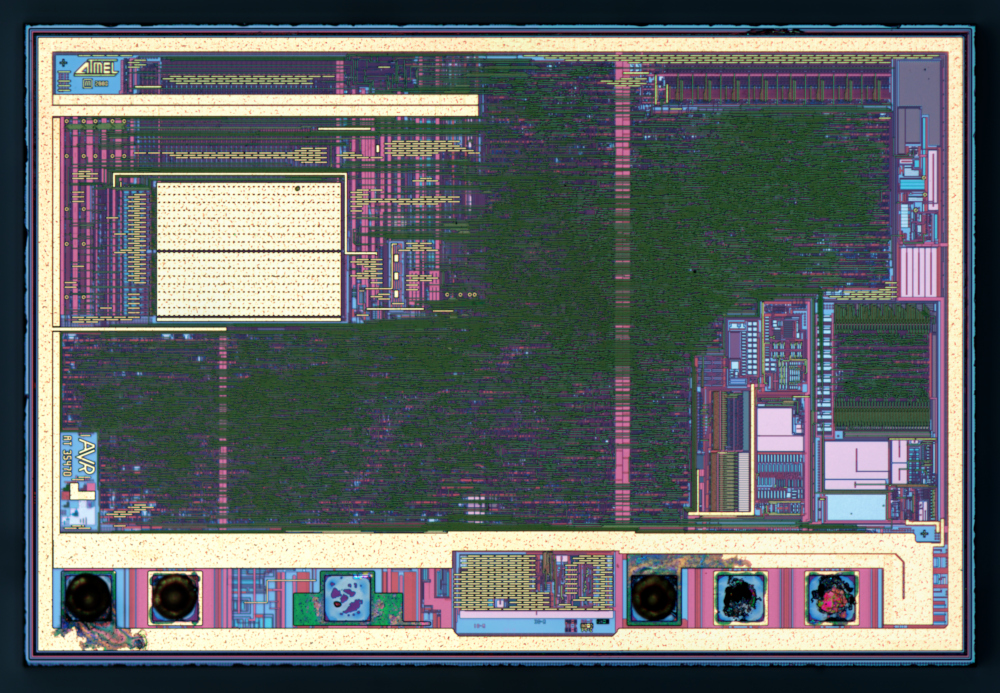
Update: After metaization etch:
Read more →
December 21, 2018
Holtek HT7133-1 - 30mA LDO : weekend die-shot
Holtek HT7133-1 is a tiny CMOS LDO able to deliver 30mA. 5-bit fuses on the left side is likely for output voltage trim (3% specified Vout tolerance), some of the voltage customization has to be done via masks. Die size 499x490 µm.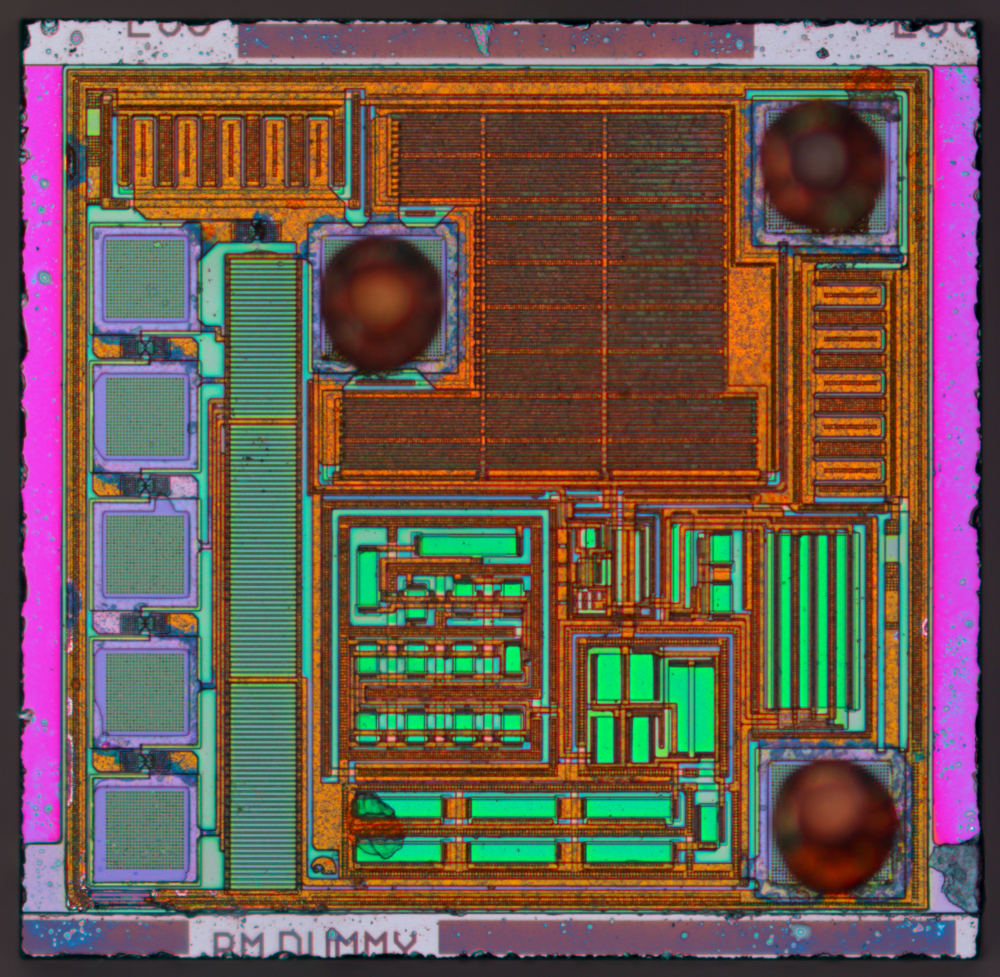
Closer look at fuses:
Read more →
December 13, 2018
"Luch" quartz wristwatch IC : weekend die-shot
Inside old (199x) Belorussian wristwatch I've found this IC: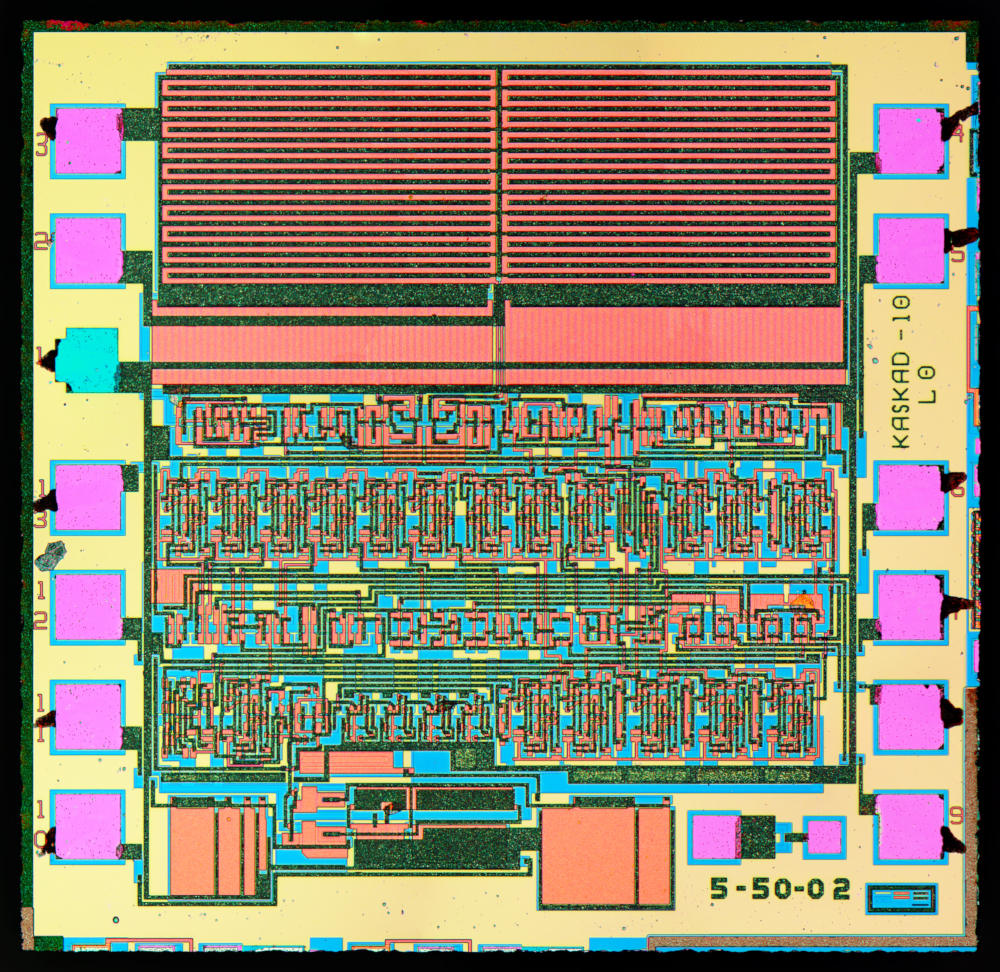
After metalization etch:
Read more →

